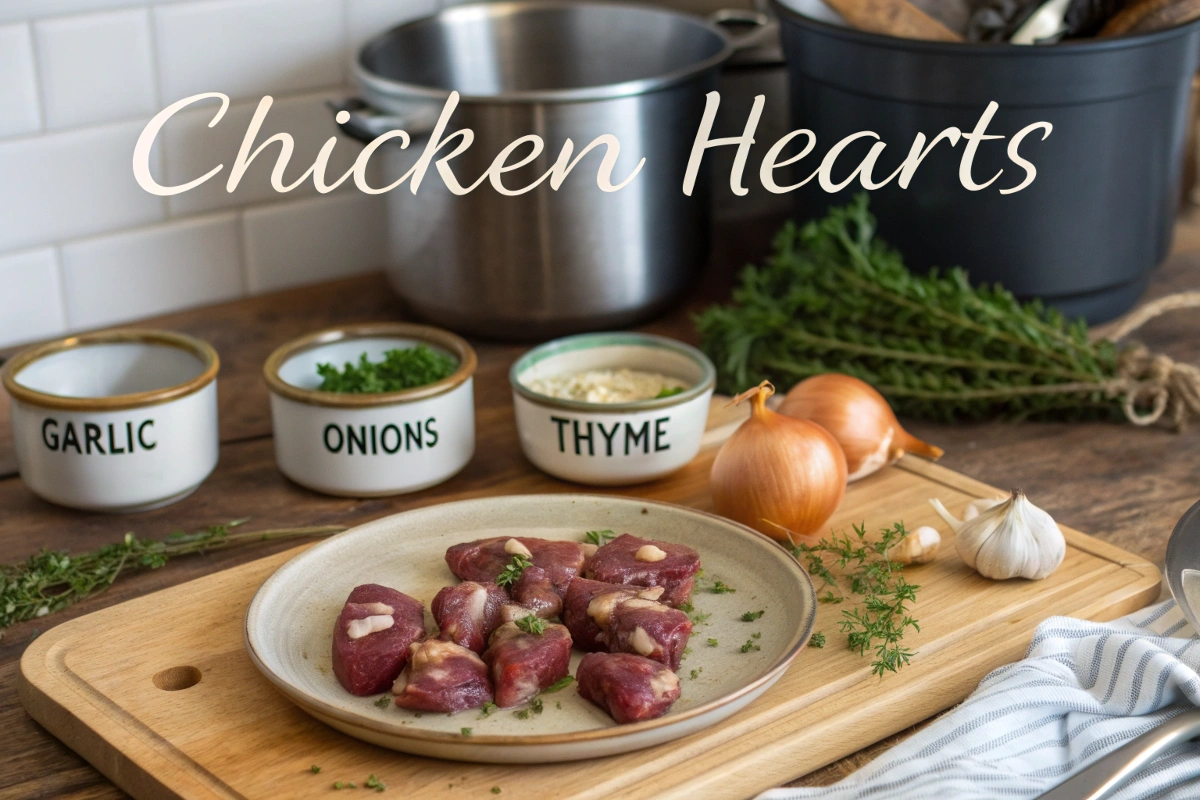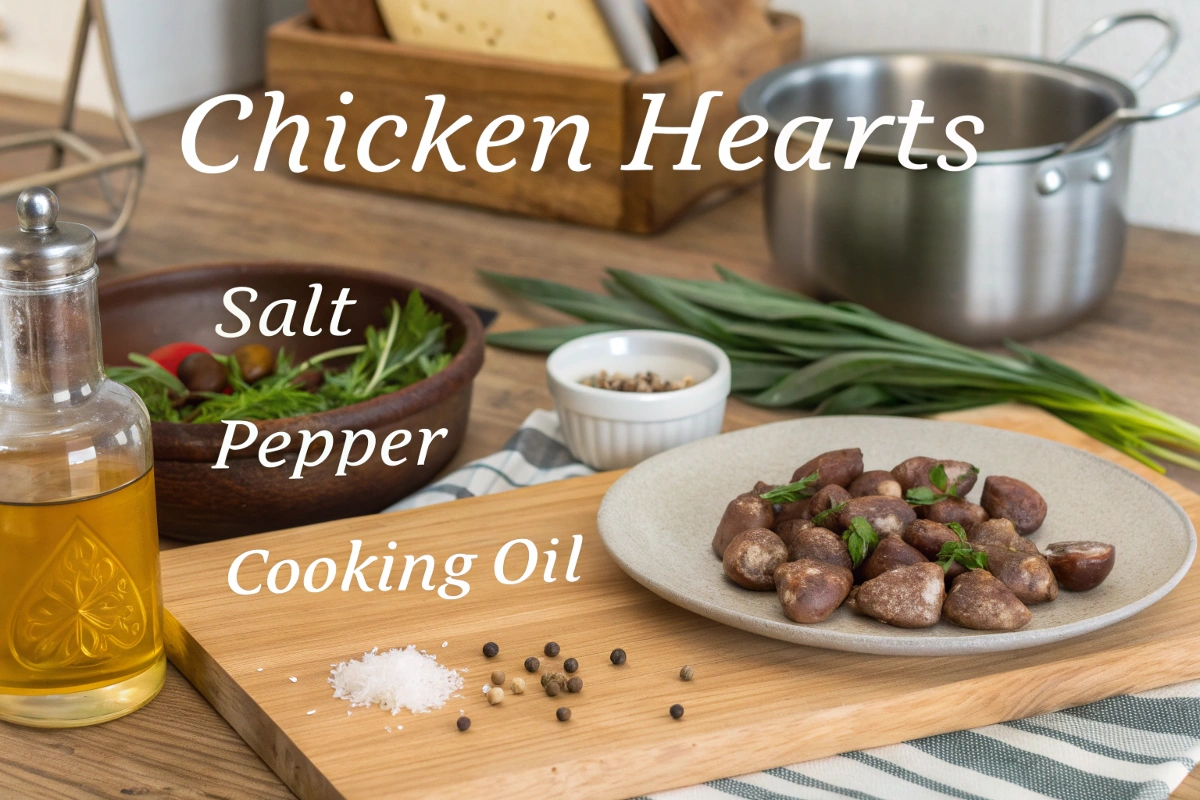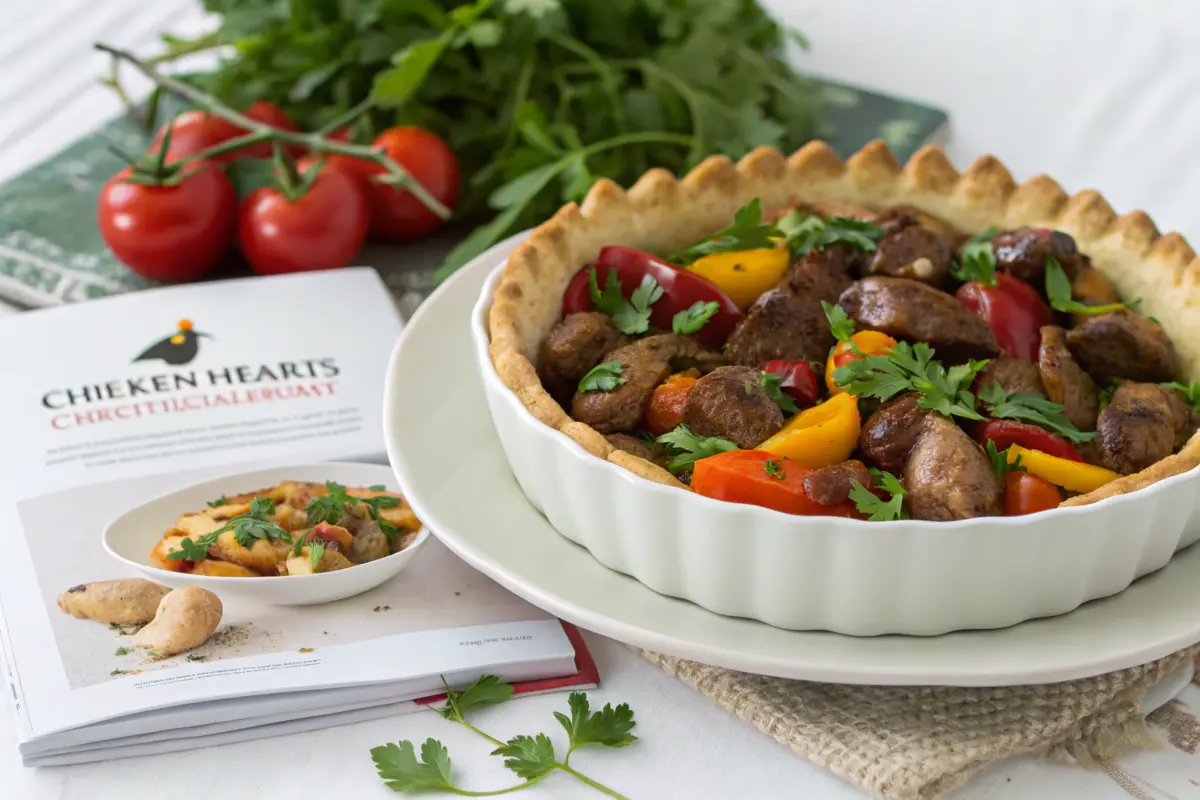Chicken hearts might not be the first dish you think of when craving something delicious, but they’re definitely worth considering. This often-overlooked organ meat is packed with flavor and nutrition, making it a fantastic option for anyone looking to diversify their diet. Once a staple in various global cuisines, chicken hearts are enjoying a resurgence in modern kitchens. Their high protein content, along with a rich array of vitamins and minerals, make them a powerhouse of nutrition. On top of that, their unique taste and texture make them a delight for food lovers who are looking for something different. Whether you’re thinking about adding chicken hearts to your meals or simply curious about this nutrient-dense food, you’re in the right place to learn more. Let’s dive into why the hearts deserve a spot in your next meal.
What Are Chicken Hearts?
the hearts are a muscular organ found in the chest of a chicken. Unlike other organ meats like liver or kidneys, chicken hearts have a denser, more meaty texture that makes them unique. Despite their small size, these hearts pack a concentrated flavor that’s perfect for various cooking methods. Whether you’re grilling, braising, or adding them to stews and soups, chicken hearts bring depth and richness to any dish.
The texture of the hearts strikes a balance between tenderness and firmness, with a slightly chewy consistency. This makes them a great addition to many recipes, adding both substance and flavor. Their mild, savory taste allows them to absorb the flavors of seasonings and marinades, which is why they’re often featured in cuisines worldwide. Chicken hearts may seem unusual at first, but their versatility and ability to enhance other flavors make them a must-try for adventurous eaters.
flavorful additions
They are a nutrient-packed food, rich in protein, vitamins, and minerals, offering numerous health benefits that make them a great addition to your diet. Their versatility and unique taste make them perfect for enhancing a variety of dishes. Here’s why you should consider adding chicken hearts to your meals:
- High in Protein: Chicken hearts are an excellent source of high-quality protein, essential for muscle building, tissue repair, and overall body function. A small serving can provide a significant portion of your daily protein needs, making them an ideal choice for anyone looking to boost their protein intake.
- Rich in Vitamins and Minerals: These small but mighty organs are loaded with important nutrients, including Vitamin B12, iron, zinc, and selenium. Vitamin B12 plays a crucial role in nerve function and red blood cell formation, while iron helps transport oxygen throughout the body, ensuring optimal energy levels.
- Low in Fat: Compared to other meats, they are relatively low in fat, making them a healthier option for those who are mindful of their fat intake. This quality makes them a great addition to a balanced diet.
- Taurine Content: Chicken hearts are also a good source of taurine, an amino acid known to support heart health and regulate cholesterol levels, adding another layer of health benefits to this already nutritious food.
Overall, chicken hearts provide a nutrient-dense option for those looking to enhance their intake of protein, essential vitamins, and minerals, while also enjoying a tasty and sustainable food choice.inerals.

How Are Chicken Hearts Prepared?
They are incredibly versatile and can be cooked in many delicious ways. Here are some popular methods to try:
- Grilling: Grilling them is a quick and tasty option. Simply marinate the hearts in olive oil, garlic, and your favorite spices, then grill them until they’re crispy on the outside while staying tender inside. This method gives them a smoky, charred flavor that’s perfect for summer meals.
- Sautéing: For a simple and flavorful dish, sauté the hearts with garlic, onions, and herbs. A splash of soy sauce or balsamic vinegar can elevate the flavors, adding depth and richness to the dish. This method works well for a fast weeknight meal.
- Braising: Braising chicken hearts in a savory sauce or broth is ideal for slow-cooking. The hearts absorb the rich flavors of the liquid, making them incredibly tender and perfect for stews or hearty dishes. This technique allows them to shine in flavorful, comforting meals.
- Boiling: Boiling chicken hearts is great for making broths or soups. Their rich, savory flavor infuses the liquid, creating a delicious base for any soup or stew. This method enhances the overall flavor profile, making it an excellent choice for hearty, warming dishes.
Chicken hearts can be seasoned in a variety of ways. Popular spices like cumin, paprika, oregano, and chili flakes add a burst of flavor depending on the type of cuisine you’re preparing. Experiment with different herbs and spices to discover the perfect combination for your taste buds!ing.
Health Benefits of Eating these flavorful additions
the hearts offer a wide range of health benefits, making them an excellent addition to any diet, especially for those aiming to enhance their overall well-being.
Supports Muscle Growth and Repair: Packed with high-quality protein, chicken hearts are ideal for muscle growth and tissue repair. This is particularly advantageous for athletes who push their bodies to the limit, as well as for those recovering from injury. Protein plays a crucial role in rebuilding muscle fibers, ensuring that the body recovers quickly and efficiently.
Promotes Heart Health: Another impressive benefit of chicken hearts is their rich taurine content. Taurine, an amino acid, is linked to better cardiovascular health. It helps regulate blood pressure, lower cholesterol levels, and supports overall heart function. By adding them to your diet, you’re giving your heart the nutrients it needs to stay strong and healthy.
Improves Blood Circulation: Chicken hearts also shine when it comes to improving circulation. Thanks to their high iron content, they promote the production of hemoglobin, a protein that carries oxygen through the bloodstream. This, in turn, enhances oxygen delivery to vital organs and tissues, boosting overall energy levels and well-being.

Cultural Significance
Chicken hearts have been a staple ingredient in many cultures around the world. Here’s how different countries have embraced this nutrient-packed delicacy:
- Brazil: In Brazil, chicken hearts are often skewered, seasoned with garlic, and grilled as part of a traditional BBQ (churrasco). Known for their bold flavors, chicken hearts are a favorite street food in Brazil.
- Philippines: In the Philippines, chicken hearts are commonly grilled and served as part of isaw, a popular street food dish. They are often marinated in soy sauce, vinegar, and spices for extra flavor.
- Middle Eastern Cuisine: In Middle Eastern countries, chicken hearts are often used in stews and rice dishes. They are flavored with aromatic spices like cumin, cinnamon, and coriander, providing a hearty and satisfying meal.
Chicken hearts not only bring unique flavors to various dishes but also reflect the culinary traditions of diverse cultures.
Finding the hearts is easier than you might think, and there are several places where you can buy them:
- Local Butcher Shops: Butchers often carry chicken hearts, especially if they offer a wide range of poultry cuts. It’s worth asking your butcher directly if you don’t see them on display.
- Farmer’s Markets: For fresh, high-quality chicken hearts, visit your local farmer’s market. Many vendors sell organs alongside regular cuts of meat, and you can often find locally sourced options.
- Grocery Stores: Some larger supermarkets or specialty food stores may carry them, typically found in the frozen meat section. If you don’t see them right away, ask an employee if they can be ordered.
Storage Tips
- Refrigeration: Fresh chicken hearts should be stored in the refrigerator. They’re best used within 1-2 days to ensure optimal freshness and flavor.
- Freezing: They freeze well, making it easy to store them for later use. Place them in a sealed container or freezer bag and keep them in the freezer for up to 3 months. When you’re ready to use them, simply thaw in the fridge overnight before cooking.
Common Myths About Eating Organ Meats
Despite the numerous benefits of eating organ meats, including the hearts, there are several misconceptions surrounding them:
- Myth 1: Organ meats are unhealthy: While organ meats are high in cholesterol, they are also packed with beneficial nutrients like iron and B vitamins. Eating them in moderation is key to reaping the health benefits.
- Myth 2: Organ meats taste bad: When prepared properly, chicken hearts can be incredibly flavorful. Their mild taste can easily absorb seasonings and spices, making them a delicious addition to many dishes.
- Myth 3: Organ meats are not sustainable: Eating organ meats, including the hearts, is a sustainable practice. It helps reduce food waste by using parts of the animal that would otherwise be discarded.
Chicken Hearts: A Sustainable Food Choice
One of the biggest benefits of eating them is their sustainability. By incorporating every part of the chicken, from the breasts to the organs, you’re actively reducing food waste. This practice not only makes the most of the animal but also helps support more eco-friendly and ethical eating habits. Organ meats like the hearts are often more affordable than traditional cuts of meat, making them an excellent choice for budget-conscious consumers who want to eat sustainably without breaking the bank.
Additionally, the demand for organ meats is typically lower than for popular cuts like chicken breasts or thighs, which means they have a smaller environmental impact. With less demand, there’s less pressure on natural resources, contributing to a more sustainable food system overall. Choosing them can be a simple yet impactful way to support a greener, more responsible approach to eating.

Chicken Hearts in the Modern Diet
As people become more health-conscious and environmentally aware, organ meats, including chicken hearts, are gaining popularity. They fit well into modern dietary trends such as:
- Paleo: Chicken hearts are a natural choice for those following the Paleo diet, as they are nutrient-dense and free from processed ingredients.
- Keto: Because chicken hearts are low in carbohydrates and high in protein, they make a great addition to a keto diet.
- Whole Foods: For those interested in a whole foods diet,they offer a clean, minimally processed protein source.
They are a versatile, nutritious, and sustainable option for anyone looking to diversify their protein sources.
Frequently Asked Questions (FAQs)
Are chicken hearts safe to eat?
Yes, they are completely safe to eat when cooked properly. Like any meat, they should be handled and prepared with care to avoid contamination.
How do I cook chicken hearts?
They can be grilled, sautéed, boiled, or braised. They can be marinated with your favorite seasonings or spices to enhance their flavor.
Can I eat chicken hearts every day?
While chicken hearts are nutritious, it’s important to consume them in moderation as part of a balanced diet. Eating a variety of proteins is the best way to maintain a healthy diet.
Are chicken hearts high in cholesterol?
Yes, like most organ meats, chicken hearts are higher in cholesterol. However, they also contain beneficial nutrients that can support heart health, so consuming them in moderation is recommended.
Where can I buy them?
You can find them at local butcher shops, farmer’s markets, and some grocery stores, often in the frozen meat section.
Can I freeze them?
Yes, chicken hearts freeze well. Simply store them in an airtight container or freezer bag for up to 3 months.
Can chicken hearts be part of a weight loss diet?
Yes, chicken hearts can be part of a weight loss diet. They are low in calories and fat while being high in protein, which helps you feel full for longer and supports muscle maintenance during weight loss. Additionally, their nutrient density ensures you receive essential vitamins and minerals, even on a calorie-restricted diet. By preparing them with healthy cooking methods like grilling or sautéing with minimal oil, chicken hearts can be a satisfying and nutritious addition to a weight management plan.

Conclusion
Chicken hearts are a flavorful, nutrient-rich, and sustainable food choice that has been cherished across cultures for centuries. Whether you’re aiming to boost your protein intake, try something new in the kitchen, or make more eco-conscious eating decisions, they’re well worth exploring. With their impressive versatility, health benefits, and deep culinary roots, chicken hearts are far more than a fleeting trend—they’re a meaningful and delicious addition to any diet.
Ready to give them a try? Start experimenting with chicken heart recipes and discover all the delicious benefits this powerhouse food has to offer. From boosting your protein intake to reducing food waste, chicken hearts are a smart, flavorful, and sustainable choice that you can feel good about.


6 thoughts on “Unlock the Flavor of Chicken Hearts: Nutritious and Delicious Recipes You’ll Love!”